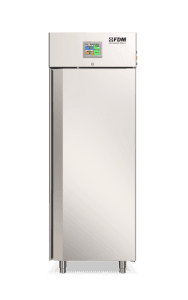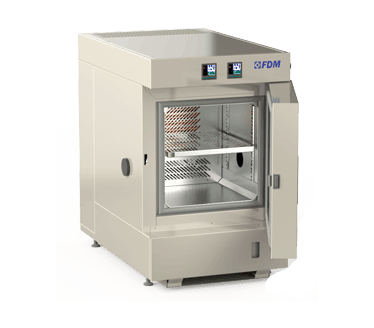
In the world ofproduct and material testing, the right attention is not always paid to the packaging test. While it is important to always pay it, in the case of pharmaceutical packaging testing it is absolutely essential.
In fact, pharmaceutical packaging plays a crucial role in ensuring the preservation, safety and efficacy of the drugs themselves. Due to the delicacy of the product, the packaging must guarantee the protection of the product from external agents, maintain the chemical and physical stability of the drug, all while respecting rigorous internationally recognized regulatory standards.
In today's article we explore which and how many pharmaceutical packaging tests exist, what the reference standards are and with which tools they are conducted.
The Four Types of Pharmaceutical Packaging Tests
Many tests have to do, incidentally or not, with the packaging of the product, whether it is a drug or not.
Beyond this, there are at least four main categories of pharmaceutical packaging tests that are aimed exclusively at verifying certain characteristics of the packaging itself.
And they are the following:
- Packaging stability tests
These tests are used to evaluate the packaging's ability to maintain the integrity and stability of the drug over time, evaluating the impact of various environmental factors, above all temperature and humidity but also the impact of light. These are fundamental tests for predicting the shelf life of the product.
- Container integrity tests
The integrity of the container is obviously essential and serves to prevent contamination and alterations of the drug itself. These tests evaluate the resistance to pressure, the presence of micro-leaks and the tightness of the seals to guarantee the protection of the contents.
- Material compatibility tests
Since we are talking about chemical products, it is essential that the packaging does not react in any way with the drug it is in contact with, releasing potentially harmful substances. Compatibility tests verify that the materials used - such as glass, plastic, metal, rubber - are suitable and safe if in contact with the active ingredient.
- Storage protocol tests
All drugs must be stored for more or less long periods and must be done in specific environmental conditions. Storage protocol tests simulate the real conditions in which drugs will be stored to observe the effects on the packaging and ensure that the drug remains intact during transportation and storage.
condizioni ambientali specifiche. I test dei protocolli di stoccaggio vanno a simulare le condizioni reali in cui i farmaci verranno conservati per osservare gli effetti sul packaging e assicurarsi che il farmaco resti integro durante il trasporto e lo stoccaggio.Perform
Climate Stress
Discover the new series of Climate Chambers for controlled climate testing
Pharmaceutical Packaging Testing Standards
Like all product and material testing, pharmaceutical packaging testing is subject to internationally recognized standards that provide guidelines to follow for the main types of tests.
The main ones are listed below:
- ASTM International: Several ASTM standards provide guidelines for different types of packaging. You can find them here.
- ISO 11607: Covers the requirements for packaging of sterilized medical devices and sterile barrier systems.
- ICH Q5C: Regulates the stability of biotechnology products, including storage studies.
- USP 671: Defines tests for the permeability of packaging to gases and moisture.
You cannot find the ideal chamber for your test?
Create your own environment, according to any test requirement
FDM climate chamber for packaging testing
Many of the tests we have discussed, especially those of stability and storage protocols, require the simulation of precise and controlled environmental conditions. The main laboratory instrument for performing this type of test is the climate chamber.
The climate chamber consists of a compartment hermetically isolated from the outside, inside which it is possible to set, alter and control a series of environmental parameters. The main ones are temperature and relative humidity but, with appropriate accessories, it is also possible to simulate various types of lighting and the impact of precipitation.
The FDM climate chamber is the ideal solution for performing pharmaceutical packaging tests.
Our climate chambers are able to perform all the climate tests related to pharmaceutical packaging tests, ensuring high levels of precision and control by the designated operator.
Furthermore, our technicians are always available to listen to all the customer's needs to design together a climate chamber that meets all their needs.
For further doubts and questions, please do not hesitate to contact us.
Do you have to take Stability Tests?
Contact us to receive more information about FDM Stability Chambers



